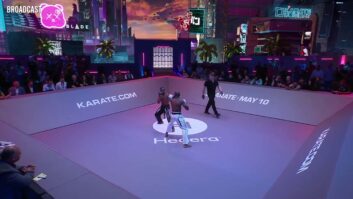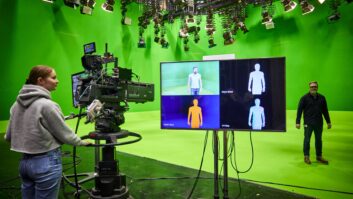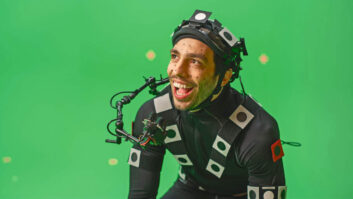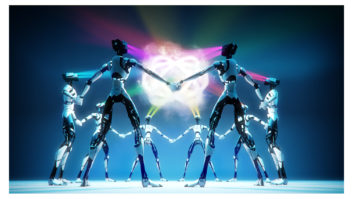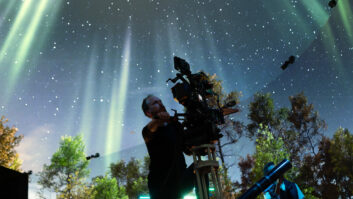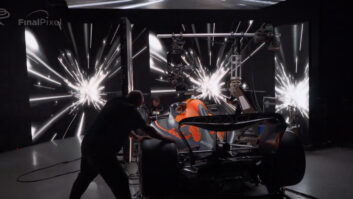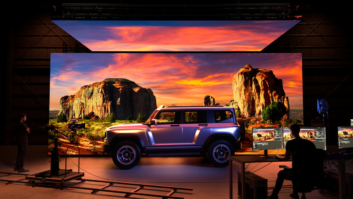talkRADIO is part of Wireless Group Media, which operates 11 London-based radio stations and others outside the capital. Wireless Group, in turn, is part of News UK, the global media conglomerate.
The station already had a policy of visualising radio, streaming 20 hours a day of its output to YouTube and social media. With the US election in view, it developed an ambitious plan to transform its live stream.
“We were looking at innovative solutions to engage our audiences and satisfy our advertisers, over and above what other radio broadcasters are doing,” explains Nick Prater, head of broadcast technology for the Wireless Group. “We determined that virtual studio technology was now mature and could provide the unique advantage we needed.”
The American presidential election was a focus for development. But that gave Prater and his colleagues just four weeks to develop a system from scratch. Luckily, they had already started talks with Mo-Sys Engineering, specialists in precision camera tracking and virtual studios.
Mo-Sys had recently launched a one-stop package solution for virtual studios and augmented reality. StarTracker Studio combines the StarTracker motion tracking system – which uses randomly placed reflective dots (“stars”) and spotter cameras to provide extremely precise camera location – with a pre-configured rack of switching, keying and the graphics power to sustain realtime, photorealistic virtual environments.
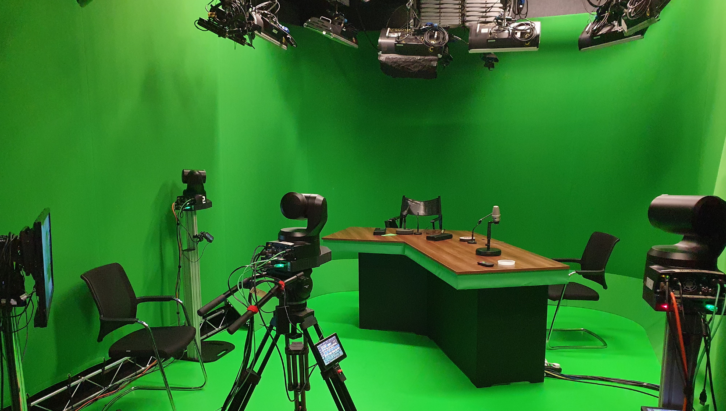
“We had a small space which we could convert into the studio,” explains Prater. “But we wanted it to look big, to look luxurious. So we asked Mo-Sys what they could do in time. They joined the challenge, putting their best people on it.”
One of the great attractions was that Mo-Sys could provide all the elements of the system, from engineering concepts to visual design. They provided the desk at which host Mike Graham sat and brought in a lighting designer.
Given the short timescale, they chose Panasonic PTZ cameras, which were already integrated with StarTracker Studio. Because of the dimensions of the studio, Mo-Sys had to fabricate special brackets to mount the cameras as close to the wall as possible.
“We didn’t want the virtual studio to look like a computer game – we wanted it to look real,” Prater says. “Getting the textures and the lighting right in the virtual studio took a lot of time – more than any of us expected. But the Mo-Sys designers listened to our feedback and we got what we wanted. That was tough – a lot of work on both sides.”
The key element of StarTracker Studio is the graphics system, which uses the Unreal Engine from Epic Games, running on standard HP workstations. “Mo-Sys gave me confidence that Unreal was the way to go,” Prater states.
“Because Unreal is a plug-in for the Mo-Sys tracking on standard computer hardware, we are free to upgrade at our pace. We can always be using the latest versions, so we can stay on the cutting edge.”
One of the challenges of covering the presidential election – indeed, one of the challenges of 2020 – is that Covid-19 social distancing limits the number of guests who will travel to a studio, and their placement if they do. So, flexibility in camera positioning and movement is critical, without the need for time-consuming alignment processes.
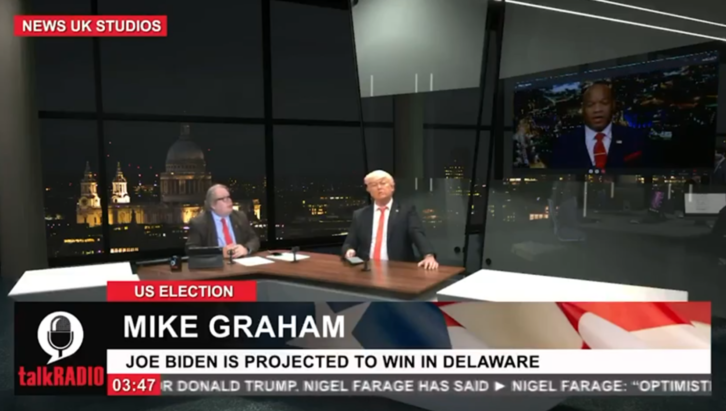
StarTracker is uniquely powerful in taking just a few moments to set up and being stable thereafter. “When you’re on a tight timetable, we want the flexibility to move cameras as our guests change,” Prater says.
Inevitably, most of the guests appeared via Zoom, and so a pop-up virtual monitor was part of the graphic design. To help host Mike Graham establish the right eyeline, there was a real monitor in the studio, which was replaced by the virtual graphics. So, too, were the other routine paraphernalia of a radio studio: the mic live light, the mute button, the computers for scripts, data and rundowns.
“The strength of talkRADIO’s coverage is that we take talented broadcasters with immensely strong communications skills, who establish a one-to-one connection with the audience,” explains Prater. “And we know that the audience like looking at us – very many of them ‘listen’ to us on devices with screens.
“So, we needed to take those radio skills and put them in a new environment, a new way to engage with the audience. We know that we succeeded on election night, because our audience stayed with us, and the social media engagement was excellent.”
Given that this is the first time anywhere that a radio station has developed this level of richness in its visualisation, how would talkRADIO’s Nick Prater sum up the project?
“What we achieved, working together with Mo-Sys is something really remarkable – something quite sensational,” he says. “Afterwards I spoke to a television executive, who said of our coverage ‘that looks really good – as good as television’. For a small radio team, supported by Mo-Sys, I think we achieved something remarkable.”
Having built the system, talkRADIO is now looking to further opportunities to bring reporters together through the virtual studio.
